6.09 - Design For Assembly (DFA)
Overview
Design for Assembly (DFA) is a team based product design evaluation tool that via structured analysis gives feedback to designers to achieve:-
- Reduced Part Count
- Easier handling of parts
- Simplified Assembly
Evaluation is conducted using the process shown below:-
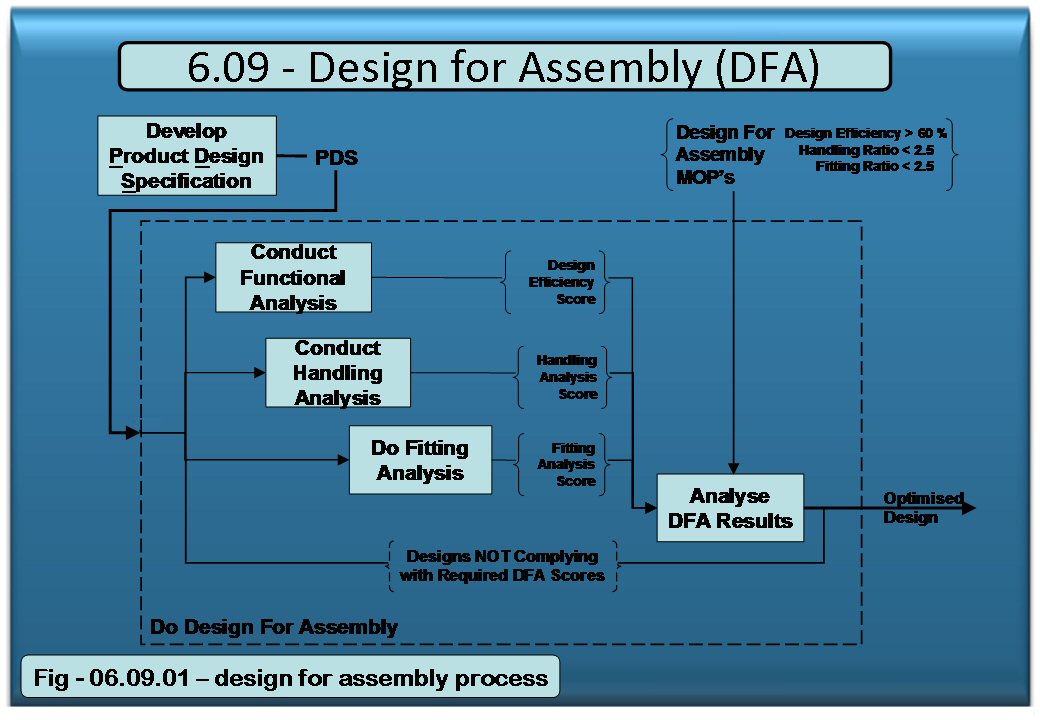
Functional Analysis
By interrogation of the component parts through the methodology, each part can be classified as essential “A” parts or non-essential “B” parts. Given this awareness, re-designs can be evolved around the essential components. Typically fasteners would be classed as “B” parts.
Handling Analysis
All component parts must have the correct orientation before the assembly can take place. The difficulty of achieving this by either manual or mechanical means can be assessed and components receiving high ratings can then be modified to give an acceptable rating. Poke-Yoke devices can be installed in the manufacturing process to ensure zero defects from this source.
Fitting Analysis
To conduct a fitting analysis an assembly flowchart is constructed and the difficulty of assembling each part in the correct sequence can be rated using DFA tables. Difficult assembly tasks and non-value added process are revealed for correction by re-design. Simple concepts such the ability to assemble in layers from above can result in major cost savings at the manufacturing stages.
Each of the above stages in the methodology allows the design to be iterated to achieve the following measures of performance that are accepted as an indication of good design:-
Measure |
Calculation |
MOP’s |
Functional Analysis gives a Design Efficiency = |
Essential Parts |
> 60% |
Total Parts |
Handling Analysis gives a Handling Ratio = |
Total Ratings |
< 2.5 |
Essential Parts |
Fitting Analysis gives a Fitting Ratio = |
Total Ratings |
< 2.5 |
Essential parts |
Typical results achieved by the application of DFA are as follows:-
It should also be noted that fewer parts also means:-
|
|
- Fewer Invoices from Fewer Suppliers
|
|
|
Handling Analysis and some elements of Functional Analysis can be conducted on individual mechanical parts and can be accessed by a CAD shape and weight analysis of the 3D solid models of the parts. This information can be held permanently against the part and fed to the DFA software for the calculation of the final overall Design Scores.
Example – Headlight Trimscrew ‘Before & After’ Analysis
Design Option |
Design for Assembly Analysis |
(1)
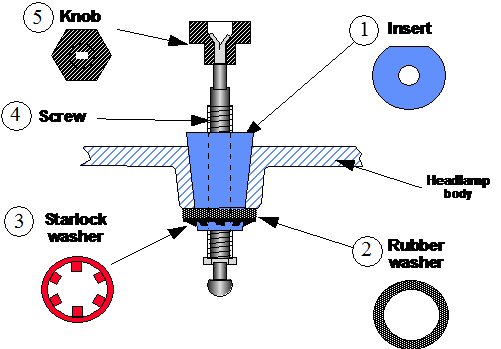
|
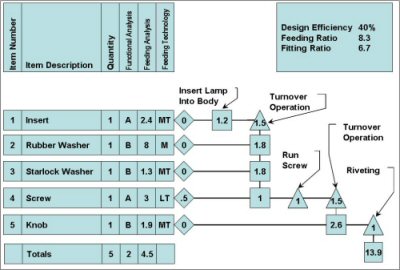
|
(2)
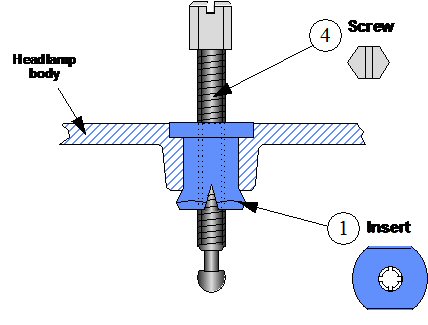
|
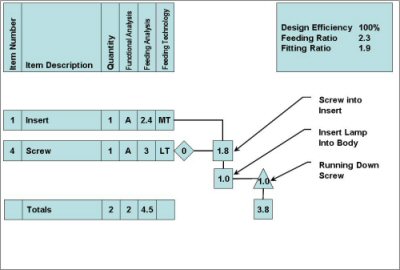
|
| |
|
Results Summary |
Parts |
Design Efficiency |
Total Feeding Index |
Feeding ratio |
Total Fitting Index |
Fitting Ratio |
(1) Original Design |
5 |
40% |
16.6 |
8.3 |
13.9 |
6.7 |
(2) New Design |
2 |
100% |
4.5 |
2.3 |
3.8 |
1.9 |